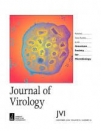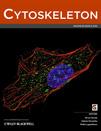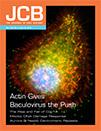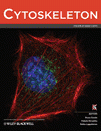Papers
2025
Divergent Rickettsia species exhibit distinct mechanisms of actin-based motility.
bioRxiv
(2025)
The Rickettsia actin-based motility effectors RickA and Sca2 contribute differently to cell-to-cell spread and pathogenicity.
mBio
16:
e02563-24
(2025)
2024
Cryo-electron tomography of stationary phase Burkholderia thailandensis.
MicroPubl Biol
10.17912/micropub.biology.001178
(2024)
Critical roles of Rickettsia parkeri outer membrane protein B (OmpB) in the tick host.
Infect Immun
92:
00515-23
(2024)
2023
Manipulation of host cell plasma membranes by intracellular bacterial pathogens.
Curr Opin Microbiol
71:
102241
(2023)
FAZ assembly in bloodstream form Trypanosoma brucei requires kinesin KIN-E.
Mol Biol Cell
34:
ar103
(2023)
2022
Plasma membrane protrusions mediate host cell-cell fusion induced by Burkholderia thailandensis.
Mol Biol Cell
33:
ar70
(2022)
A patatin-like phospholipase mediates Rickettsia parkeri escape from host membranes.
Nat Commun
13:
3656
(2022)
A glycine-rich PE_PGRS protein governs mycobacterial actin-based motility.
Nat Commun
13:
3608
(2022)
2021
Interferon receptor-deficient mice are susceptible to eschar-associated rickettsiosis.
eLife
10:
e67029
(2021)
Baculovirus actin-rearrangement-inducing factor ARIF-1 induces the formation of dynamic invadosome clusters.
Mol Biol Cell
32:
1433-1445
(2021)
Lysine methylation shields an intracellular pathogen from ubiquitylation and autophagy.
Sci Adv
7:
eabg2517
(2021)
Mechanical competition triggered by innate immune signaling drives the collective extrusion of bacterially infected epithelial cells.
Dev Cell
56:
443-460.e11
(2021)
2020
Trypanosomes have divergent kinesin-2 proteins that function differentially in flagellum biosynthesis and cell viability.
J Cell Sci
133: jcs129213
(2020)
Inflammasome-mediated antagonism of type I interferon enhances Rickettsia pathogenesis.
Nat Microbiol
5:
688-696
(2020)
2019
A metabolic dependency for host isoprenoids in the obligate intracellular pathogen Rickettsia parkeri underlies a sensitivity for the statin class of host-targeted therapeutics.
mSphere
4:
(6). pii: e00536-19. doi: 10.1128/mSphere.00536-19
(2019)
Evasion of autophagy mediated by Rickettsia surface protein OmpB is critical for virulence.
Nat Microbiol
4:
2538–2551
(2019)
2018
Baculovirus actin-based motility drives nuclear envelope disruption and nuclear egress.
Curr Biol
28:
2153-2159.e4
(2018)
RECON-dependent inflammation in hepatocytes enhances Listeria monocytogenes cell-to-cell spread.
mBio
9:
e00526-18
(2018)
The role of Sca2 and RickA in the dissemination of Rickettsia parkeri in Amblyomma maculatum.
Infect Immun
86:
e00123-18
(2018)
A streamlined method for transposon mutagenesis of Rickettsia parkeri yields numerous mutations that impact infection.
PLoS One
13:
e0197012
(2018)
Baculovirus AC102 is a nucleocapsid protein that is crucial for nuclear actin polymerization and nucleocapsid morphogenesis.
J Virol
92:
e00111-18
(2018)

2017
Actin-based motility and cell-to-cell spread of bacterial pathogens.
Curr Opin Microbiol
38:
45-57
(2017)
2016
Actin-based motility of bacterial pathogens: mechanistic diversity and its impact on virulence.
Pathog Dis
74:
ftw099
(2016)
Rickettsia Sca4 reduces vinculin-mediated intercellular tension to promote spread.
Cell
167:
670-683.e10
(2016)
Rab1 recruits WHAMM during membrane remodeling but limits actin nucleation.
Mol Biol Cell
27:
967-978
(2016)
2015
Why should cell biologists study microbial pathogens?
Mol Biol Cell
26:
4295-4301
(2015)
Virulent Burkholderia species mimic host actin polymerases to drive actin-based motility.
Cell
161:
348-360
(2015)
2014
A 2-pyridone-amide inhibitor targets the glucose metabolism pathway of Chlamydia trachomatis.
mBio
6:
e02304-14
(2014)
Editorial overview: Cell architecture: Cellular organization and function.
Curr Opin Cell Biol
26:
v-vii
(2014)
Electron tomography and simulation of baculovirus actin comet tails support a tethered filament model of pathogen propulsion.
PLoS Biol
12:
e1001765
(2014)
Rickettsia actin-based motility occurs in distinct phases mediated by different actin nucleators.
Curr Biol
24:
98-103
(2014)
2013
Arp2/3-mediated actin-based motility: a tail of pathogen abuse.
Cell Host Microbe
14:
242-255
(2013)
2012
Rickettsia parkeri invasion of diverse host cells involves an Arp2/3 complex, WAVE complex and Rho-family GTPase-dependent pathway.
Cell Microbiol
14:
529-545
(2012)
Establishing intracellular infection: escape from the phagosome and intracellular colonization (Rickettsiaceae).
Chapter 5 of Intracellular Pathogens II: Rickettsiales, edited by G. H. Palmer and A. F. Azad
(2012)
[ Request by emailing welch@berkeley.edu ]
Structural insights into WHAMM-mediated cytoskeletal coordination during membrane remodeling.
J Cell Biol
199:
111-124
(2012)
Regulation of integrin trafficking, cell adhesion, and cell migration by WASH and the Arp2/3 complex.
Cytoskeleton
69:
1047-1058
(2012)

Expression of an epitope-tagged virulence protein in Rickettsia parkeri using transposon insertion.
PLoS One
7:
e37310
(2012)
The nuclear localization of actin requires AC102 in Autographa californica M nucleopolyhedrovirus-infected cells.
J Gen Virol
93:
1795-1803
(2012)
Membrane-deforming proteins play distinct roles in actin pedestal biogenesis by enterohemorrhagic E.coli.
J Biol Chem
287:
20613-20624
(2012)
2011
Antibacterial autophagy occurs at PI(3)P-enriched domains of the endoplasmic reticulum and requires Rab1 GTPase.
Autophagy
7:
17-26
(2011)
The actin nucleation factor JMY is a negative regulator of neuritogenesis.
Mol Biol Cell
22:
4563-4574
(2011)
Pathogens and polymers: Microbe-host interactions illuminate the cytoskeleton.
J Cell Biol
195:
7-17
(2011)
New mechanisms and functions of actin nucleation.
Curr Opin Cell Biol
23:
4-13
(2011)
2010
Rickettsia Sca2 is a bacterial formin-like mediator of actin-based motility.
Nat Cell Biol
12:
1057-1063
(2010)

Actin-based motility drives baculovirus transit to the nucleus and cell surface.
J Cell Biol
190:
187-195
(2010)

Defining a core set of actin cytoskeletal proteins critical for actin-based motility of Rickettsia.
Cell Host Microbe
7:
388-398
(2010)

An actin-filament-binding interface on the Arp2/3 complex is critical for nucleation and branch stability.
Proc Natl Acad Sci U S A
107:
8159-8164
(2010)
A nucleator arms race: cellular control of actin assembly.
Nat Rev Mol Cell Biol
11:
237-251
(2010)
WASH and the Arp2/3 complex regulate endosome shape and trafficking.
Cytoskeleton
67:
193-206
(2010)

2008
WHAMM is an Arp2/3 complex activator that binds microtubules and functions in ER to Golgi transport.
Cell
134:
148-161
(2008)

Repetitive N-WASP-binding elements of the enterohemorrhagic Escherichia coli effector EspF(U) synergistically activate actin assembly.
PLoS Pathog
3:
e1000191
(2008)
2007
2006
A role for cortactin in Listeria monocytogenes invasion of NIH 3T3 cells, but not in its intracellular motility.
Cell Motil Cytoskeleton
63:
231-243
(2006)
Arp2/3 ATP hydrolysis-catalysed branch dissociation is critical for endocytic force generation.
Nat Cell Biol
8:
826-833
(2006)
The ARP2/3 complex: an actin nucleator comes of age.
Nat Rev Mol Cell Biol
7:
713-726
(2006)

Dynamic nuclear actin assembly by Arp2/3 complex and a baculovirus WASP-like protein.
Science
314:
464-467
(2006)
2005
Effects of Arp2 and Arp3 nucleotide-binding pocket mutations on Arp2/3 complex function.
J Cell Biol
168:
315-328
(2005)
Actin-based motility of intracellular pathogens.
Curr Opin Microbiol
8:
35-45
(2005)
Identification of a bacterial factor required for actin-based motility of Burkholderia pseudomallei.
Mol Microbiol
56:
40-53
(2005)
Plasma membrane organization is essential for balancing competing pseudopod- and uropod-promoting signals during neutrophil polarization and migration.
Mol Biol Cell
16:
5773-5783
(2005)
NMR analyses of the activation of the Arp2/3 complex by neuronal Wiskott-Aldrich syndrome protein.
Biochemistry
44:
15247-15256
(2005)
2004
A Rickettsia WASP-like protein activates the Arp2/3 complex and mediates actin-based motility.
Cell Microbiol
6:
761-769
(2004)
Critical conformational changes in the Arp2/3 complex are induced by nucleotide and nucleation promoting factor.
Mol Cell
16:
269-279
(2004)
2003
Salmonella effectors translocated across the vacuolar membrane interact with the actin cytoskeleton.
Mol Microbiol
48:
401-415
(2003)
Mycobacterium marinum escapes from phagosomes and is propelled by actin-based motility.
J Exp Med
198:
1361-1368
(2003)
Formation of filopodia-like bundles in vitro from a dendritic network.
J Cell Biol
160:
951-962
(2003)
2002
Turning on the Arp2/3 complex at atomic resolution.
Structure
10:
131-135
(2002)
Cellular control of actin nucleation.
Annu Rev Cell Dev Biol
18:
247-288
(2002)
Motility determinants in WASP family proteins.
Mol Biol Cell
13:
4045-4059
(2002)
2001
Systematic mutational analysis of the amino-terminal domain of ActA reveals novel functions in actin-based motility.
Mol Microbiol
42:
1163-1177
(2001)
Cytoskeleton: actin and endocytosis -- no longer the weakest link.
Curr Biol
9:
R691-R694
(2001)
Pivotal role of VASP in Arp2/3 complex-mediated actin nucleation, actin branch-formation, and Listeria monocytogenes motility.
J Cell Biol
155:
89-100
(2001)
Reconstitution of human Arp2/3 complex reveals critical roles for individual subunits in complex structure and activity.
Mol Cell
8:
1041-1052
(2001)
2000
Three regions within ActA promote Arp2/3 complex-mediated actin nucleation and Listeria monocytogenes motility.
J Cell Biol
150:
527-537
(2000)
1999
The world according to Arp: regulation of actin nucleation by the Arp2/3 complex.
Trends Cell Biol
9:
423-427
(1999)
The Wiskott-Aldrich syndrome protein directs actin-based motility by stimulating actin nucleation with the Arp2/3 complex.
Curr Biol
9:
555-558
(1999)

1998
Interaction of human Arp2/3 complex and the Listeria monocytogenes ActA protein in actin filament nucleation.
Science
281:
105-108
(1998)
1997
Actin polymerization is induced by Arp2/3 protein complex at the surface of Listeria monocytogenes.
Nature
385:
265-269
(1997)
The human Arp2/3 complex is composed of evolutionarily conserved subunits and is localized to cellular regions of dynamic actin filament assembly.
J Cell Biol
138:
375-384
(1997)